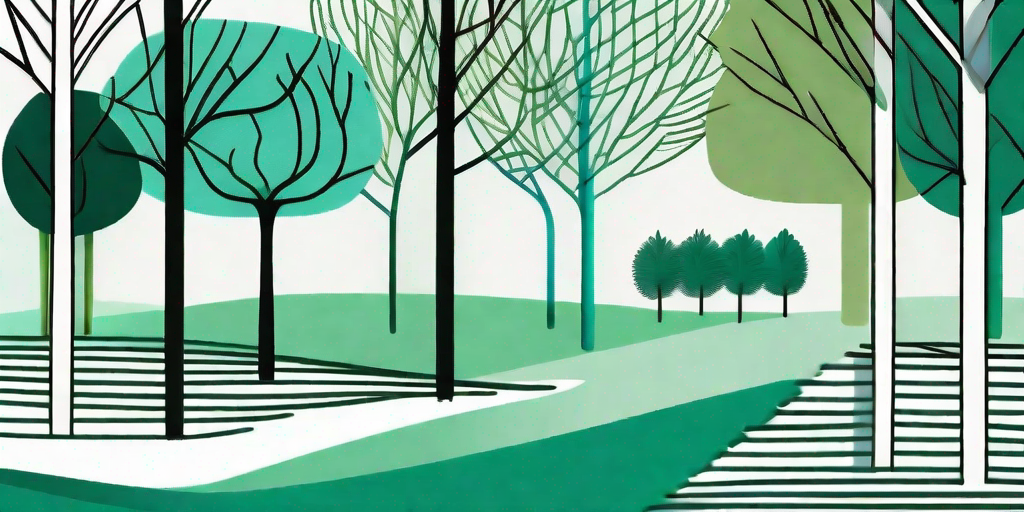
If you're looking to take your garden game to the next level, then it's time to get acquainted with the art of pleaching. This ancient gardening technique, which involves training trees to grow in certain shapes or directions, can transform your garden into a living masterpiece. So, grab your gardening gloves, and let's dive into the world of pleaching.
What is Pleaching?
Pleaching, also known as tree training, is a horticultural technique that involves weaving the branches of trees together to form a living fence or archway. This technique has been used for centuries to create stunning garden landscapes and provide natural shade and privacy.
While pleaching may sound complicated, it's actually quite simple. All you need is a bit of patience, a steady hand, and a love for all things green. And the best part? You can pleach almost any type of tree, from fruit trees to ornamental species, giving you endless possibilities for your garden design.
The History of Pleaching
Believe it or not, pleaching has been around since the medieval times. It was originally used to create living fences and barriers, providing both privacy and protection. Over time, however, pleaching evolved into an art form, with gardeners creating intricate designs and patterns with their trees.
Today, pleaching is making a comeback, with gardeners around the world using this technique to add a touch of elegance and sophistication to their gardens. So, if you're looking to impress your neighbors with your gardening skills, pleaching is the way to go.
How to Pleach Trees
Choosing the Right Trees
Before you start pleaching, you'll need to choose the right trees. While you can pleach almost any type of tree, some species are easier to work with than others. Fast-growing trees with flexible branches, such as willow or hazel, are ideal for beginners. If you're looking for something a bit more challenging, you can try pleaching fruit trees, such as apple or pear.
When choosing your trees, you'll also need to consider their size and shape. For a traditional pleached hedge, you'll want trees that are tall and slender, with a clear trunk and a dense canopy. For a more modern look, you can choose trees with a more irregular shape and a sprawling canopy.
Training Your Trees
Once you've chosen your trees, it's time to start training them. This involves bending and weaving the branches together to form the desired shape. To do this, you'll need some basic gardening tools, such as pruning shears and plant ties.
Start by pruning your trees to remove any unwanted branches. Then, using the plant ties, start weaving the branches together. This process can take some time, so be patient. Remember, the goal is to create a living work of art, not to rush through the process.
Benefits of Pleaching
Pleaching isn't just about creating a beautiful garden. It also has a number of practical benefits. For one, pleached trees can provide natural shade, making your garden a more comfortable place to relax during the hot summer months. They can also provide privacy, blocking out unwanted views and creating a sense of seclusion.
On top of that, pleaching is a great way to make the most of a small garden. By training your trees to grow in certain directions, you can create a sense of depth and space, making your garden appear larger than it actually is.
Common Pleaching Mistakes
While pleaching is relatively straightforward, there are a few common mistakes that beginners often make. One of these is choosing the wrong trees. As mentioned earlier, not all trees are suitable for pleaching. Some species are too slow-growing, while others have branches that are too brittle to be woven together.
Another common mistake is not giving the trees enough time to grow. Pleaching is a slow process, and it can take several years for your trees to reach their full potential. So, if you're looking for instant results, pleaching may not be for you.
FAQs
Can I pleach any type of tree?
While you can technically pleach any type of tree, some species are easier to work with than others. Fast-growing trees with flexible branches, such as willow or hazel, are ideal for beginners.
How long does it take to pleach a tree?
Pleaching is a slow process, and it can take several years for your trees to reach their full potential. However, the end result is well worth the wait.
Do pleached trees require a lot of maintenance?
Like any other garden feature, pleached trees require regular maintenance to keep them looking their best. This includes pruning, watering, and occasionally re-weaving the branches.
Conclusion
So there you have it, folks. Pleaching is not only a fantastic way to add a touch of elegance and sophistication to your garden, but it's also a fun and rewarding project. So why not give it a go? Who knows, you might just discover a new passion for tree training.
Remember, the key to successful pleaching is patience and creativity. So, take your time, let your imagination run wild, and most importantly, have fun. Happy gardening!















